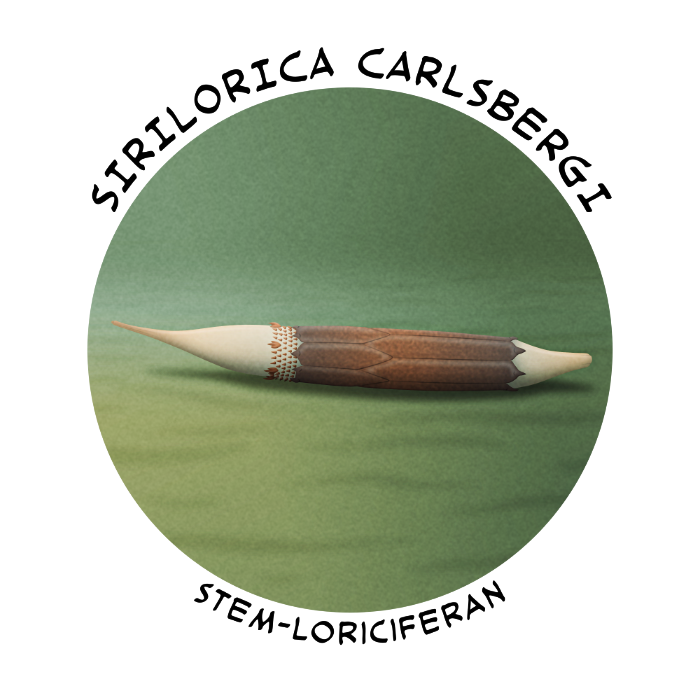Even more obscure and poorly-understood than the mud dragons, loriciferans weren’t even discovered until the 1970s. Over 40 living species of these tiny meiofaunal animals are currently known, but much like the kinorhynchs there are probably many more still to be described.
Less than 1mm long (0.04″), their most distinctive feature is the “lorica”, a stiff corset-like casing surrounding their body. They’re also the first multicellular organisms discovered able to live completely without oxygen in a deep basin in the Mediterranean Sea.
Traditionally loriciferans have been considered to be part of the scalidophorans, closely related to priapulids and kinorhynchs, but genetic studies have suggested they may actually be much closer related to nematoids and early panarthropods instead.
(The nematoids – nematode worms and horsehair worms – don’t have a definite fossil record until the Devonian, and won’t be making an appearance in this series. There’s one possible larval form from Australia, but with all the disagreements about the mess of early ecdysozoan relationships it’s unclear where exactly it actually fits in.)
Loriciferans have a very sparse fossil record – like the kinorhynchs and other meiofauna they’re basically “paleontologically invisible” – but there are a few known Cambrian fossils of the group. The minute Eolorica from the late Cambrian of Canada (~497-485 million years ago) is incredibly similar in size and appearance to modern loriciferans, showing that by that time these animals had already taken up the same sort of ecological role as they have today.
But further back in the Cambrian there was something that may actually represent a very early or “stem” loriciferan.

Sirilorica carlsbergi is known from the Sirius Passet fossil deposits in Greenland (~518 million years ago). It was a worm-like animal with a tube of loricate plates around its body and spines around its head, and it was much bigger than modern species, up to about 8cm long (~3″).
It suggests that modern-style loriciferans are actually highly miniaturized and neotenous, evolving to retain a tiny larva-like body plan and exploit a fully meiofaunal lifestyle, and lost their original larger worm-like adult forms in the process.
